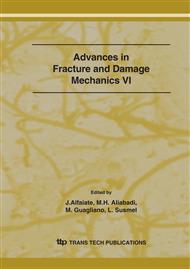p.261
p.265
p.269
p.273
p.277
p.281
p.285
p.289
p.293
The Inelastic Response Differences of Two Buildings Designed without and with Steel Braces
Abstract:
The inelastic behavior of a 17 level reinforced concrete building, for two structural models, is studied: reinforced concrete frames only (A case), and reinforced concrete frames, and K-type steel braces (B case). The building is designed to avoid that the drifts exceed 0.012 for the same seismic behavior factor level (Q= 3), in agreement with the Mexico City Code. The building is type B (offices). The soil is considered as soft and the foundation is a rigid box with point piles. With the design, A and B cases, the comparisons of the transversal sections, maximum lateral displacements, drifts, story shears, design mechanical elements and resultant reinforcement steel are made. With the step-by-step analysis, A and B cases, with representative accelerations records of the soft soil, the inelastic responses of the local and global ductility demands are determined and also are compared with the permissible levels of the Code. We pretend to observe the inelastic behavior (displacements, maxima demands of global and local ductility), for both types structural models, to decide which it is more convenient.
Info:
Periodical:
Pages:
277-280
Citation:
Online since:
September 2007
Authors:
Keywords:
Price:
Сopyright:
© 2007 Trans Tech Publications Ltd. All Rights Reserved
Share:
Citation:


